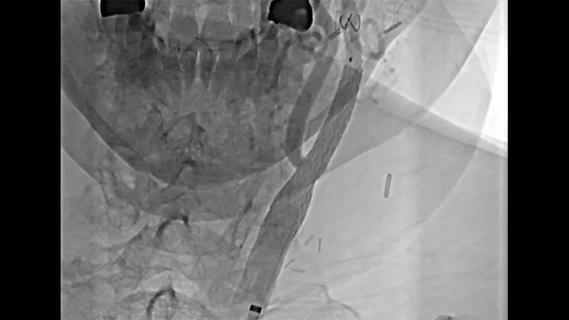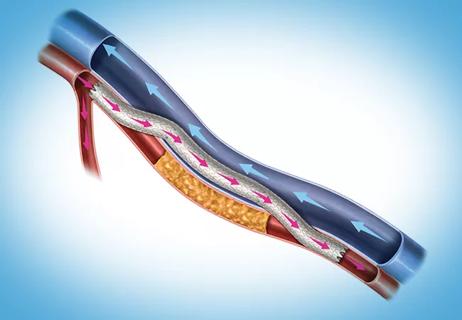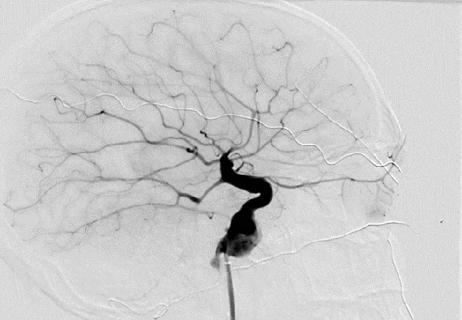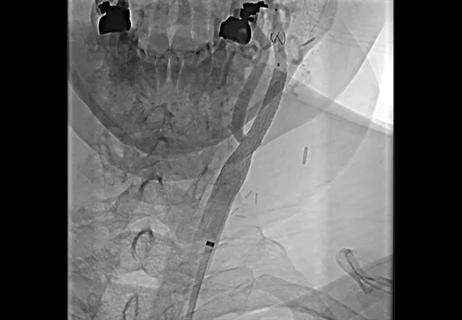Study finds comparable management and near-term outcomes between races

Despite significant differences in risk factors, demographics and socioeconomic factors between Black and white patients presenting with acute type B aortic dissection (TBAD), equivalent management and short-term outcomes between the two cohorts can be achieved. So finds a retrospective single-center study from Cleveland Clinic published online ahead of print in the Journal of Vascular Surgery.
Advertisement
Cleveland Clinic is a non-profit academic medical center. Advertising on our site helps support our mission. We do not endorse non-Cleveland Clinic products or services. Policy
The findings suggest that TBAD affects the most socially and economically vulnerable populations regardless of race while also underscoring the importance of taking an integrated, multidisciplinary, population-based approach to aortic disease, the researchers conclude.
“We found that Black patients presented with TBAD about 10 years earlier in life and with a lower level of health maintenance than their white counterparts did, but this did not result in outcomes differences within our system,” says the study’s corresponding author, Levester Kirksey, MD, MBA, The Walter Buckley Endowed Vice Chair of Vascular Surgery at Cleveland Clinic.
Racial disparities in risk factors and management are well documented in cardiovascular disease, including for some vascular conditions. However, few studies have addressed potential racial disparities among patients with TBAD. Hypertension is the primary risk factor for TBAD, and healthcare access and early uninterrupted health maintenance are fundamental to TBAD prevention. Since hypertension medication adherence and healthcare access differ across racial and ethnic groups, the Cleveland Clinic researchers sought to explore the extent to which racial disparities may exist in TBAD treatment and outcomes.
They retrospectively identified consecutive patients with TBAD admitted to the cardiovascular ICU at Cleveland Clinic from 2015 through 2020. Patients were included in the analysis if they self-identified as Black (n = 57) or white (n = 123) and were managed medically or surgically for TBAD.
Advertisement
The Black and white patient cohorts were compared in terms of demographics, socioeconomic factors, insurance type, previous cardiac/aortic interventions, antihypertensive medication, medication adherence, number of primary care and emergency department (ED) visits in the prior two years, and TBAD management outcomes. Socioeconomic status was quantified using the Area Deprivation Index, which is based on variables including education, employment, housing quality and poverty.
The two cohorts were statistically comparable on all but the following characteristics:
TBAD anatomic features and management were statistically comparable between the two cohorts, including the proportion of patients with complicated dissection, the proportion with high-risk features in the setting of uncomplicated dissection, the proportion who underwent surgical intervention during hospitalization (40.4% for Black patients vs. 46.3% for white patients; P = 0.45) and the type of surgical intervention used.
Differences did emerge, however, in several indicators of health maintenance and in some demographic metrics:
Advertisement
In contrast, the two cohorts had the same median APACHE II score (i.e., 9) and the same median hospital length of stay (7 days) and statistically comparable rates of readmission and 30-day mortality.
“We found that despite significant differences in risk factors, demographics and socioeconomic characteristics between Black and white patients with acute TBAD, the two cohorts were similar in terms of prevalence of complicated dissection and high-risk morphologic features, and they received similar management and achieved similar near-term outcomes,” observes Dr. Kirksey.
He notes that the lower health maintenance care received by Black patients prior to acute presentation — reflected by fewer primary care visits, greater ED utilization and poorer hypertension management and therapy adherence — is consistent with these patients’ higher Area Deprivation Index score. Notably, however, the Area Deprivation Index score of the study’s white patients with TBAD also indicated high deprivation relative to national benchmarks. “This suggests that TBAD is a condition that particularly impacts vulnerable populations and under-resourced communities regardless of their race,” Dr. Kirksey says.
The study used APACHE II score as a marker of case severity at presentation, which includes age as an important component. The score was highly comparable between the two cohorts even though Black patients were nearly 10 years younger, on average, than their white counterparts. “For Black patients to be that much younger and still have the same collective APACHE II score indicates that they had a higher chronic disease comorbidity profile,” Dr. Kirksey notes. “This underscores the role for health maintenance in preventing development of TBAD in Black patients with aortic disease, which should be an implementation research priority.”
Advertisement
Such an emphasis has been a focus of Cleveland Clinic’s aortic disease management in recent years, which Dr. Kirksey credits as one reason for the comparable intervention strategies and short-term outcomes between races in the current study. “We are working hard to increasingly treat patients with aortic disease in a more population-based manner that identifies patients at elevated risk for acute dissection — because of hypertension or suboptimal follow-up for hypertension therapy — and manages these patients more aggressively for purposes of prevention,” he explains.
The effort is highly multidisciplinary and devotes attention to three discrete phases of management: preventing development of TBAD, in-hospital care if an individual develops acute TBAD and post-discharge surveillance to prevent recurrence. The optimal management of complex aortic disorders requires collaboration and active communication among multiple specialists, and this care must continue for the remainder of the patient’s life.
Central to the prevention-oriented phases of management — prior to any hospital care of TBAD and then after discharge — are cardiologists such as Vidyasagar Kalahasti, MD, on the clinical team of Cleveland Clinic’s Aorta Center. They determine the best therapies for patients identified with aortic disease and provide or coordinate maintenance therapy and monitoring via check-in visits, remote blood pressure monitoring and other strategies. These same strategies are employed for patients following an intervention for acute dissection, to provide accelerated surveillance to avoid progression or recurrence. Patients are given a cuff for home blood pressure monitoring and are seen frequently — often via a mix of in-person and virtual visits — to ensure hypertension control and avoidance of hypertensive complications. These efforts are supported by the Cleveland Clinic Community Care initiative for wellness promotion and management of chronic conditions.
Advertisement
“It is an incredible opportunity to care for and educate patients with TBAD,” says Dr. Kalahasti. “The outpatient follow up-after initial treatment of TBAD is extremely important to help patients understand their condition using heart models and imaging. We explain the risk factors that led to the dissection, such as high blood pressure and smoking, and the need for lifelong care to prevent complications. It is also the time when patients are most receptive to making changes, so we make every effort to actively champion their care.”
When patients present with acute TBAD, the Aorta Center’s multidisciplinary interventional component is activated. Patients are rapidly transferred for triage in an ICU, where they are evaluated by three teams — cardiology, vascular surgery and cardiothoracic surgery — to determine their specific underlying pathology and collaboratively formulate a tailored management plan, including endovascular and open surgical options. This rapid management process for acute TBAD cases was developed by Aorta Center Director and cardiothoracic surgeon Eric Roselli, MD.
“This new study in the Journal of Vascular Surgery is important because it demonstrates how we can level the playing field for patients once they enter a multidisciplinary system providing expeditious, comprehensive and lifelong care for life-threatening aortic conditions,” says Dr. Roselli. “It also highlights the importance of our expanding efforts to include the entire healthcare community and the public to improve awareness of aortic disease so we can prevent more of these potential catastrophes from happening.”
Advertisement

Early learnings on use of the minimally invasive alternative to surgical bypass

Insights from the Cleveland Clinic experience and a multispecialty alliance

Larger data set confirms safety, efficacy and durability for SFA lesions over 20 cm

Cleveland Clinic findings prompt efforts for broad data pooling

Benefits of new FDA safety determination go beyond expanding patients’ options

Technique features heavyweight guidewire and electrocautery to access the aortic sac

A look at where TCAR and transfemoral carotid stenting are likely headed

JACC review calls for CMS to update coverage decision